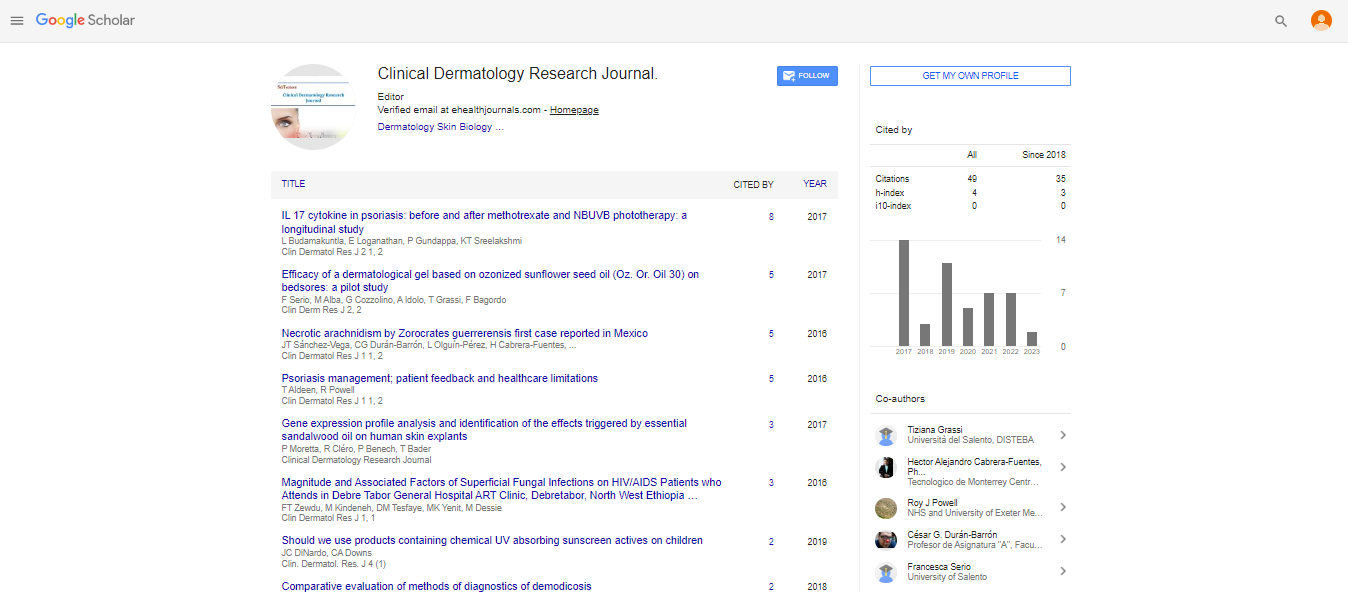Avoiding hollow eyes and skletonization by blepharoplasty
Thomas Haffner
Heumarkt Clinic, Germany
: J Clin Exp Dermatol Res
Abstract
Background: Blepharoplasty is one of the most commonly performed procedures in cosmetic surgery. The goal of an upper eyelid surgery is the rejuvenation of the periorbital area restoring youthful proportions and a pleasing look. The most common way of blepharoplasty is the resection of skin, muscle and more or less prolapsed fat. By way of a muscle resection can the status of an older arise, which is characterized by thinner soft tissue covering, and increasing skeletonization, deepening of the supratarsal fold, hollowing and unnatural operated look.
Objective: 19 years experience of the muscle saving blepharoplasty about more than 350 operations analyzed. The new perspectives of blepharoplasty are presented, which are designed for preventing of aging, preventing of the typical side effects of a common blepharoplasty, such as hollow eyes, deep supratarsal fissure, skeletonization, dark upper lid rings and the diminishing of youthfulness. Optimization of the scar quality by the elimination of sututers’ tensio is stressed, too.
Method: The muscle saving blepharoplasty performed by meticulous preparation of the skin without damage the eyelid muscles. For access to the septum by fat resection, minimal invasive spreading of the muscle fibers instead of excision should be made. An imbrication of the orbicalis muscles works as tightening and augmenting and supporting of the skin closure in the next step. The orbicularis augmentation blepharoplasty performed already 19 years in the author’s practice. In this retrospective study, the results are 350 cases between 2000-2015 evaluated.
Results: By the preservation and the duplication of internal muscles using a natural filling, the eyelid arises and deep or hollow eyes are prevented. The results are a younger looking upper eyelid, by which the visibility of the tarsus and an opened look exists, the bony contours of the orbita is not visibly forced but softened after the augmentation procedure in a natural way. The scars are regularly thin and inconspicuous since the skin has no tension.
Conclusions: The usual practice of eyelid-muscle removal in blepharoplasty must be rethought. An iatrogenic skeletonized look, by which aging processes further provocated, must be prevented. The blepharoplasty should be made with preventive perspectives against aging and not iatrogenic provocate it.
Biography
Thomas Haffner is a board certified reconstructive, vascular and cosmetic surgeon in Germany. He was trained in the reconstructive- plastic surgery and senology section of the Semmelweis University (Szabolcs Str.) in Budapest. He is also specialized in vascular surgery and worked many years as department leader in German clinics. He also attended educational courses by Prof. E. Biemer and certified with the endoscopic plastic surgery and micro-surgery. He completed cadaver and live Op. courses in the Universities of Erlangen, Ulm, Regensburg and resident assistance by Prof. Rettinger in Ulm. In 2000 he established his private clinic for vascular-reconstructive & aesthetic surgery in Cologne, Germany. His primary focus is the breast and facial surgery using minimal invasive and endoscopic methods. He invented the innovative vertical scar free reconstructive 3D mastopexy. He presented a new facelift method the “Temporal Endoscopic Face and Midface Lifting” without facial scars.
E-mail: info@heumarkt.clinic
 Spanish
Spanish  Chinese
Chinese  Russian
Russian  German
German  French
French  Japanese
Japanese  Portuguese
Portuguese  Hindi
Hindi 

